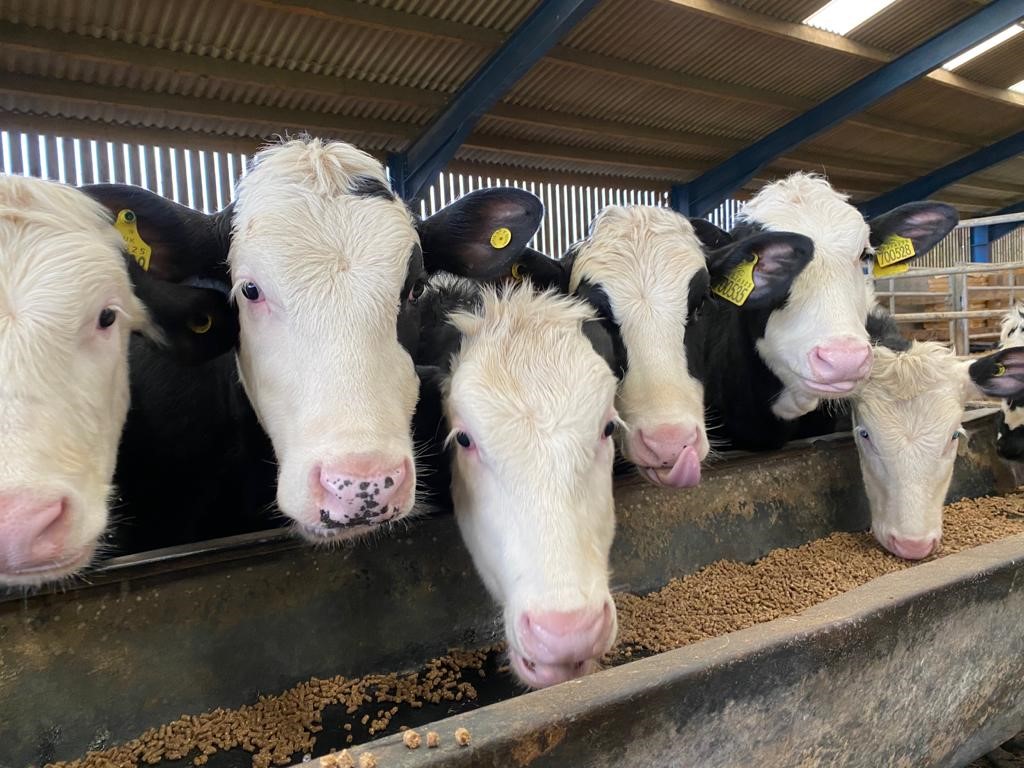Energy demand for any dairy animal depends on their specific requirement for; maintenance, reproduction, milk production and body reserves. Whilst our mature cows are pregnant their energy demand is focussed on maintenance and foetal growth.
As a heifer progresses through the pregnancy we must consider she is still undergoing her own continued development including her own maintenance, growth, mammary tissue growth/development, and then in the last trimester of pregnancy, the foetus goes through a huge growth phase and, therefore, energy demand increases significantly and quickly (from day 191). Some farms look to balance the diet for a heifer at 141 days (to take an average of her requirement throughout) but this is not sufficient for the third trimester as the demand for energy and protein is far greater.
The expected calf birth weight and day of gestation can be used to calculate a heifer’s requirement for metabolisable energy and protein. The risk of undersupplying energy is that the dam will prioritise the energy she has got available to the development of her calf resulting in her growth slowing or stopping altogether. This may result in difficult calving as she has not grown to the expected size.
Stages of pregnancy
It is important to know intakes at stages through pregnancy; during pre-calving we can assume consumption to be 1.75% of body weight but this depends on the palatability of the ration put in front of them. Heifers begin to eat lesser quantities and therefore they need the diet to be more energy-dense.
Heifers should be entering the milking parlour at 82% - 90% mature bodyweight post-calving to optimise first lactation yield (Van Amburgh et al., 1998). We can work on a relatively accurate estimation that heifers will produce the same percentage of milk of a mature cow as to what she is as a percentage of her mature weight i.e if she only enters the milking herd at 70% of mature weight, we can only expect 70% of mature cow’s milk yield from her as she is still needing a proportion of energy intake for own growth.
As with all animals, clean, fresh and plentiful water access should be available at all times and this will encourage dry matter intakes.
Feeding Seperate Diets
On some farm set-ups, it can be difficult to run two separate groups and feed two separate diets. Often it is seen as a balancing act and diets are formulated to be in the middle of mature cow and heifer requirements. The problem with this is that the diet can be of higher energy than what dry cows need and lower energy than what heifers require and, due to physical capacity, the dry cows are able to consume more. So, heifers are fed restricted protein and energy.
Accounting for the heifers' needs
If we don’t account for this higher energy demand for the heifers and their need for a higher energy-dense diet, then we risk them mobilising fat from their own reserves and have high levels of NEFA’s prior to calving. Reduced dry matter intake pre-calving can lead to the same post-calving and predispose the animal to ketosis and fatty liver syndrome.
Feeding highly digestible fibre forages to help meet demand.
It is important to consider heifers are producing colostrum in the last six weeks of pregnancy and, if they are deficient in energy and protein, we cannot expect them to produce high-quality colostrum.












